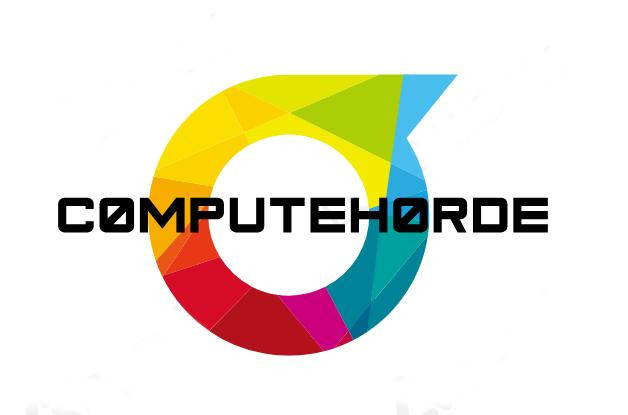Subnet 12
Compute Horde
Backend Developers
Horde subnet optimizes decentralized computing by efficiently allocating tasks and rewarding miners based on performance

SN12 : Horde
| Subnet | Description | Category | Company |
|---|---|---|---|
| SN12 : Horde | Compute for bittensor validators | Compute Infrastructure | Horde |
Created by Backend Developers Ltd., this subnet is dedicated to decentralized resource allocation for computing. The Horde subnet assigns tasks to various miner nodes via distributed computing to enhance task processing efficiency and speed. Miners receive rewards based on the computing resources they contribute and the effectiveness of task processing, while validators assess the quality of miners’ performance.
It is highlighted as a powerhouse of computation, serving as a hub for machine learning models and offering significant energy efficiency by being dormant when not actively utilised. The network comes to life swiftly during demanding tasks, showcasing its intelligence and adaptability. Validators in the network strategically choose resources based on demand, similar to a tech resource stock market, exhibiting foresight and adaptability.
Subnet 12 isn’t solely about high-performance GPUs, emphasising the importance of resource diversity where different machine capabilities are valued based on specific needs. The value of Subnet 12 lies in a combination of factors, including the network’s overall worth, current prices, and the individual’s stake in the system.
Compute Horde provides three key benefits:
- Cost-effective scalability by leveraging shared, underutilised computing power.
- Enhanced security and privacy through the distributed nature of data processing.
- Increased fault tolerance and redundancy, ensuring reliable computation even in the event of node failures or attacks.
Decentralized Access to Subnets
- The project aims to establish a decentralized network where involvement and validation within subnets are accessible to anyone with the necessary resources.
- The open nature of the project allows individuals with sufficient “tow” to participate as validators or miners without gatekeeping or stringent requirements.
- The decentralized structure enables individuals to engage with various subnets based on their capabilities and interests, fostering a dynamic and inclusive ecosystem.
Rhef and his team have developed new functionality in Subnet 12, focusing on using open-source models from Hugging Face for on-demand usage. One of the coolest things about this subnet is how they’re focusing on using open-source models on Hugging Face in order to create OnDemand. You can essentially call up these different models, a miner will go out, download the model, host the model.
The compute horde infrastructure allows users to input code, which is then processed by random miners. Users can access extensive compute resources without needing powerful local machines. Compute Horde supports different hardware classes, which affect the cost and speed of processing jobs. Validation mechanisms ensure hardware capabilities match job requirements before selection.
The data flow operates as follows:
- Facilitator: An internet-facing application that charges users for accepting jobs, which are then passed on to validators.
- Validator: Functions as in other Bittensor subnets. It receives organic requests from end users or generates synthetic ones, sends them to miners, and reads the results. Organic traffic results are passed back to end users, while synthetic traffic adjusts miners’ scores.
- Miner: Operates as in other Bittensor subnets. It receives job requests from validators, spawns executors to perform the actual work, and sends the results back to validators. Miners setting lower greediness levels may potentially achieve more rewards in the long run, introducing a dynamic balance of give-and-take principles.
- Executor: A virtual machine managed by a single miner, spawned to perform a single dockerized job, and discarded afterwards. Its network access is limited to the essentials needed to execute a job, such as communicating with a miner, downloading the docker image that runs the job, downloading the docker image containing the executor app, and mounting the job data volume. Executors are assigned hardware classes and collectively form the miner’s horde.
Enhanced Job Execution with Docker Image
- Docker image jobs in Subnet 12 involve providing a Docker image and an input URL, ensuring a self-contained environment for running diverse code efficiently.
- Docker images encapsulate programs along with dependencies, ensuring portability across platforms and allowing users to tailor the environment to suit specific needs.
- Utilizing Docker images, users can insulate their system from potential package conflicts, enabling seamless deployment and execution of diverse tasks.
Video Stabilization: Leveraging Compute Power
- Video stabilization in Subnet 12 utilizes Compute resources to enhance video quality, demonstrating the versatility of using tools like FFMpeg within Docker containers to manipulate videos efficiently.
- By leveraging computation resources, tasks like video stabilization can be performed seamlessly, showcasing the platform’s potential to process large video files effectively and time-efficiently.
- The video stabilization process highlights the impact of computational power in enhancing video quality and reducing shakiness, demonstrating the platform’s capability for diverse computational tasks.
Versatility of Compute Power in Video Processing
- Subnet 12 enables efficient video processing tasks, like video stabilization, emphasizing the platform’s ability to handle diverse computational jobs beyond AI-related tasks.
- The seamless integration of computational resources allows for rapid processing of video data, catering to clients exploring commercial applications in video processing and integration with existing systems for enhanced efficiency.
- The utilization of Compute power in video processing not only improves efficiency but also addresses common challenges like processing large video files on mobile devices, showcasing the platform’s adaptability across various use cases.
Subnet operation and prevention of unauthorized usage
- Different models within the system have varying dependencies during operation, with some attempting remote connections that are safeguarded against to prevent misuse for activities like Bitcoin mining, maintaining the platform’s integrity.
- The system ensures that Docker containers do not have internet access, preventing cryptocurrency mining and unauthorized resource consumption, aligning with the platform’s purpose and preventing abuse by users.
- Validators like the audience member themselves contribute to the platform and are incentivized based on their proof of work in AI tasks, ensuring fair usage and preventing unauthorized activities.
- The platform is adept at ensuring models do not unnecessarily access the internet, swiftly modifying them to function without external connectivity, thereby optimizing their operation efficiently without the need for internet access.
- The system, although currently undergoing improvements, can rapidly adapt and modify models to function without requiring internet connections, showcasing the platform’s agility in tailoring models for optimal performance without compromising security or efficiency.
Concerns with Validators and Facilitators
- Validators not having open ports and connecting to miners with open ports while connecting to facilitators for job requests raise concerns in a competitive system.
- By default, validators connect to a facilitator for job assignments, but this can be changed by modifying the validator configuration.
- Some validators want full control over their resources and the ability to monetize them, which leads to various preferences among users.
Equilibrium in Mining Dynamics
- The competition among miners drives them to provision more machines, but this can cut into emissions and impact their profitability.
- Cost-effective miners with efficient hardware can provision more machines, impacting those using expensive servers.
- Efficiency drives out cost-inefficient providers from the subnet, creating a competitive environment.
- The network aims to achieve equilibrium by continuously improving efficiency through the entry of more effective players.
Enhancing Subnet Competitiveness
- The competitive nature of the subnet motivates continuous improvement and innovation.
- Introducing faster machine start requirements challenges miners to adapt and optimize their operations for efficiency.
- Evolving the hardware class criteria creates a more interactive and responsive network environment.
Addressing Gaming Strategies
- Validators implement mechanisms to prevent miners from exploiting the system by ensuring machine visibility checks.
- Incentives encourage miners to comply with rules by verifying unique machine instances and ensuring fair participation.
- Constant evolution and safeguards are essential to maintain the integrity and competitiveness of the subnet.
Validator Behavior and Weight Copying Consequences
- Validators exhibit behavior variations in setting weights, potentially influenced by the validation software version being used.
- Weight copying validators can delay recognizing issues, impacting newcomers in the registration zone.
- Introduction of the commit reveal feature aims to prevent direct weight copying, enhancing transparency and fair scoring for miners.
Rhef, who is the owner of Subnet 12, has been a significant contributor to the Bittensor Community, creating visualizations using Grafana to make complex data more understandable.



